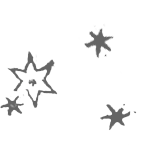Through the Eyes of the Lynx: Galileo, Natural History and the Americas
American Transformation
Francisco Hernandez lived among the Aztecs in central Mexico in the late 16th century. He collected their knowledge of plants and medicine. He employed Aztec artists. He preserved the Nahuatl names. The persistence of the Nahautl names reflects Hernandez’ respect for Native American natural knowledge, and also illustrates how the new plants resisted classification according to traditional European categories.
Publishing a definitive edition of the manuscript of Hernandez comprised the central, albeit elusive, goal of Cesi and the Academy of the Lynx. In 1611, Galileo expressed amazement at the wealth of plant knowledge relayed by Hernandez, entirely unknown to Aristotle and Pliny. European classification schemes proved inadequate, and available illustrations remained ambiguous. The landmark project, finally accomplished in 1651, more than 70 years after Hernandez’ sojourn in central Mexico, symbolizes the transformation of natural history into a global endeavor.
Browse Items on Display
| 1 |
A New Natural History of the Plants, Animals and Minerals of Mexico Hernandez, Francisco (1651) Publication of this work was widely anticipated as a guide to the “fountain of youth.” Hernandez enjoyed the reputation of being the “Pliny of the New World.” The result transformed Old World natural history. |
 |
| 2 |
On Natural History Imperato, Ferrante (1599) Cabinets of curiosity were museums in miniature, combining books, fossils, antiquarian and natural history objects. While in Naples to meet della Porta, Cesi met Ferrante Imperato. |
|
| 3 |
Non-European Plants Clusius, Carolus (1605) Charles L’Ecluse, or Clusius, created the Hortus Academicus garden at the University of Leiden where he was a professor. His works reported the latest discoveries in natural history from Alpine regions in Europe and from Spanish territories around the world. |
|
| 4 |
Natural History Nieremberg, Juan Eusebio (1635) Nieremberg saw an unpublished manuscript of Hernandez. Many of his descriptions of plants and animals relied upon Hernandez and other sources from Mexico and Peru. In classification, Nieremberg retained Hernandez’ use of native Nahuatl names. |
 |
| 5 |
Representations of Plants Munting, Abraham (1702) Munting’s natural history drew upon two editions of Hernandez, both the Lynx edition published in Rome in 1651 and an earlier printing in Mexico City (1615), known as the Quatro Libros. |
|
| 6 |
A Voyage to the Islands Madera, Barbados, Nieves, S. Christophers and Jamaica, vol. 1 Sloane, Hans (1707-1725) After studying with the chemist Robert Boyle and the naturalist John Ray, Sloane embarked on a voyage to Jamaica. In these two volumes, Sloane described about 800 species of plants he collected. Sloane included 48 extracts from Hernandez. |
|
| 7 |
A Voyage to the Islands Madera, Barbados, Nieves, S. Christophers and Jamaica, vol. 2 Sloane, Hans (1707-1725) After studying with the chemist Robert Boyle and the naturalist John Ray, Sloane embarked on a voyage to Jamaica. In these two volumes, Sloane described about 800 species of plants he collected. Sloane included 48 extracts from Hernandez. |
|
| 8 |
The Botanic Garden Darwin, Erasmus (1790) Erasmus Darwin, the grandfather of Charles Darwin, propounded an evolutionary theory in this widely popular didactic poem on plants. In Part 2, “Loves of the Plants,” he inserted a footnote about manzanilla (also known as chamomile). |





